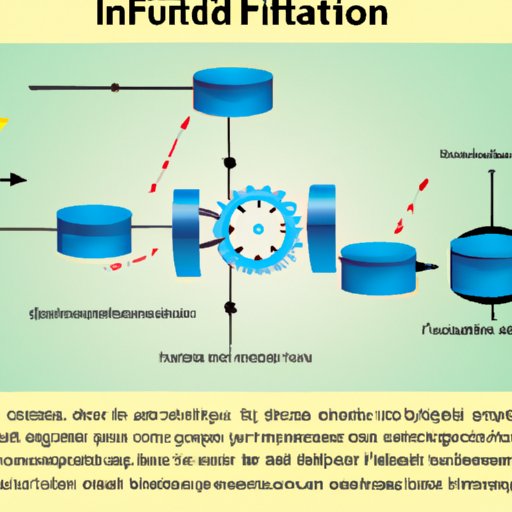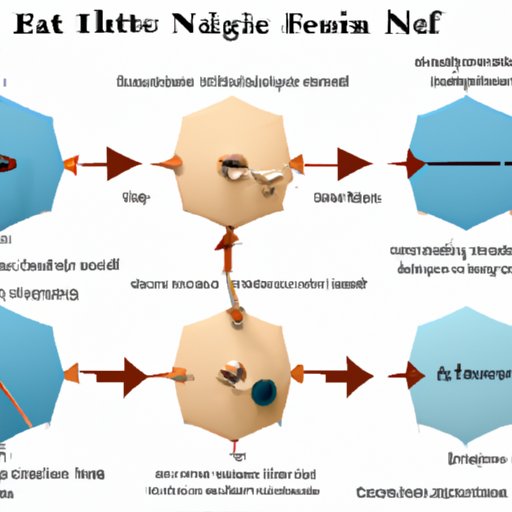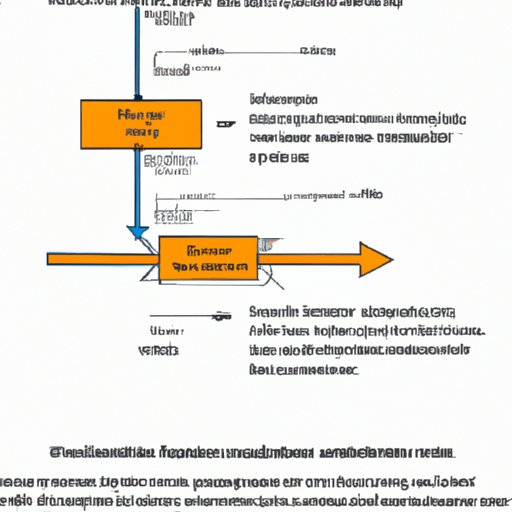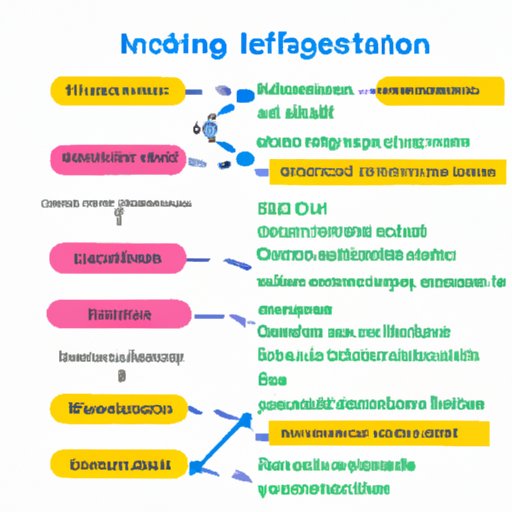Introduction
Induced fit is a dynamic process in which the structure of a protein changes when it binds to a specific substrate. It is an important concept in biochemistry and has many applications in biology. In this article, we will explore what induced fit is, how it works, and its implications for future research.

Exploring Induced Fit: An Overview of the Mechanism and Its Applications
Induced fit is a phenomenon in which the structure of a protein changes when it binds to a substrate. This change in structure can result in the formation of new bonds between the protein and the substrate, or the breaking of existing bonds. As a result, the binding affinity of the protein for the substrate increases, allowing it to more effectively carry out its function.
What is induced fit? To better understand this process, it is useful to consider the structure of proteins. Proteins are composed of linear sequences of amino acids that fold into complex three-dimensional structures. These structures are stabilized by non-covalent interactions between side chains of the amino acids. When a substrate binds to a protein, the structure of the protein may change to accommodate the shape of the substrate. This is known as induced fit.
How does induced fit work? The process begins with the substrate binding to the protein. This binding causes the protein to undergo structural changes, such as the formation of new bonds or the breaking of existing bonds. These structural changes result in a tighter binding between the protein and the substrate, increasing the affinity of the protein for the substrate and thus allowing it to more effectively carry out its function.
There are several different types of induced fit. One type is electrostatic induced fit, which occurs when the binding of a substrate causes the protein to form new electrostatic interactions with the substrate. Another type is conformational induced fit, which involves the rearrangement of the protein’s backbone structure to better fit the substrate. Finally, there is allosteric induced fit, which occurs when the binding of a substrate causes the protein to undergo a conformational change that affects the activity of the enzyme.
Induced fit has many applications in biology, ranging from protein folding to molecular recognition to cellular signaling. In protein folding, induced fit allows proteins to rapidly and accurately fold into their native state. In molecular recognition, induced fit allows proteins to bind specifically to their target molecules. Finally, in cellular signaling, induced fit allows proteins to detect and respond to signals from other molecules.
How Does Induced Fit Work? A Comprehensive Guide
To gain a better understanding of how induced fit works, it is useful to consider the structural and conformational dynamics of proteins. Proteins are composed of linear sequences of amino acids that fold into complex three-dimensional structures. These structures are stabilized by non-covalent interactions between side chains of the amino acids. When a substrate binds to a protein, the structure of the protein may change to accommodate the shape of the substrate. This is known as induced fit.
Structural changes in proteins can occur in several ways. Electrostatic induced fit occurs when the binding of a substrate causes the protein to form new electrostatic interactions with the substrate. Conformational induced fit occurs when the rearrangement of the protein’s backbone structure allows it to better fit the substrate. Finally, allosteric induced fit occurs when the binding of a substrate causes the protein to undergo a conformational change that affects the activity of the enzyme.
Examples of induced fit in biological systems include enzymes binding to substrates, DNA binding to regulatory proteins, and antibodies binding to antigens. In each case, the binding of the substrate causes the protein to undergo structural changes that allow it to more effectively interact with the substrate. This increased binding affinity allows the protein to more efficiently carry out its function.
Induced Fit: What It Is and How It Works
The process of induced fit can be broken down into two steps. First, the substrate binds to the protein and induces structural changes in the protein. Second, these structural changes increase the affinity of the protein for the substrate, allowing it to more effectively carry out its function. This process is facilitated by the non-covalent interactions between the side chains of the amino acids in the protein.
The role of induced fit in biological systems is varied and far-reaching. In protein folding, induced fit allows proteins to rapidly and accurately fold into their native state. In molecular recognition, induced fit allows proteins to bind specifically to their target molecules. Finally, in cellular signaling, induced fit allows proteins to detect and respond to signals from other molecules.
The benefits of induced fit include faster reaction rates, higher specificity, and greater stability. However, there are also some limitations to the process. For example, induced fit is not always reversible, meaning that the protein may remain in its altered state even after the substrate has been removed. Additionally, induced fit can cause proteins to become less flexible, making them less able to adapt to changing environmental conditions.

Unlocking the Secrets of Induced Fit: A Deep Dive into Its Mechanism
To fully understand the mechanism of induced fit, it is important to consider the interaction of substrates with enzymes. Enzymes are proteins that catalyze chemical reactions by lowering the activation energy required for the reaction to occur. In order for an enzyme to catalyze a reaction, the substrate must bind to the active site of the enzyme. During this binding process, the structure of the enzyme may change to better fit the substrate. This is known as induced fit.
The structural changes that occur during induced fit involve the formation of new bonds or the breaking of existing bonds between the side chains of the amino acids in the protein. These structural changes result in a tighter binding between the protein and the substrate, increasing the affinity of the protein for the substrate and thus allowing it to more effectively carry out its function.
The kinetics and thermodynamics of induced fit can also provide insight into the mechanism of the process. Kinetic analysis of induced fit reveals that the rate of the reaction is affected by the strength of the bond between the substrate and the enzyme. Thermodynamic analysis reveals that the energetics of the reaction are affected by the enthalpy and entropy of the system.

From Structural Changes to Biological Functions: Examining the Role of Induced Fit
The role of induced fit in biological systems is varied and far-reaching. In protein folding, induced fit allows proteins to rapidly and accurately fold into their native state. In molecular recognition, induced fit allows proteins to bind specifically to their target molecules. Finally, in cellular signaling, induced fit allows proteins to detect and respond to signals from other molecules.
In protein folding, induced fit allows proteins to rapidly and accurately fold into their native state. By inducing structural changes in the protein, induced fit helps the protein to adopt its most stable conformation. This is critical for the proper functioning of the protein, as an improperly folded protein may be unable to perform its function.
In molecular recognition, induced fit allows proteins to bind specifically to their target molecules. By inducing structural changes in the protein, induced fit increases the affinity of the protein for the target molecule. This allows the protein to recognize and bind to the target molecule with greater specificity, thus allowing it to carry out its function more effectively.
Finally, in cellular signaling, induced fit allows proteins to detect and respond to signals from other molecules. By inducing structural changes in the protein, induced fit increases the sensitivity of the protein to external stimuli. This allows the protein to respond quickly and accurately to changes in the environment, thus allowing cells to carry out their functions more effectively.
Conclusion
Induced fit is a dynamic process in which the structure of a protein changes when it binds to a specific substrate. This change in structure can result in the formation of new bonds between the protein and the substrate, or the breaking of existing bonds. As a result, the binding affinity of the protein for the substrate increases, allowing it to more effectively carry out its function.
The implications of induced fit for future research are numerous. Understanding the mechanism of induced fit could help scientists design new drugs that bind more effectively to their target proteins. It could also help scientists develop new proteins that are more efficient at carrying out their functions. Finally, it could lead to a better understanding of how proteins interact with one another in biological systems.
In conclusion, induced fit is a dynamic process that plays an important role in biological systems. From protein folding to molecular recognition to cellular signaling, induced fit allows proteins to more effectively carry out their functions. As we continue to unlock the secrets of induced fit, we can gain a deeper understanding of how proteins work and how they interact with one another in biological systems.
(Note: Is this article not meeting your expectations? Do you have knowledge or insights to share? Unlock new opportunities and expand your reach by joining our authors team. Click Registration to join us and share your expertise with our readers.)
